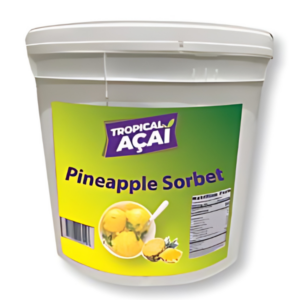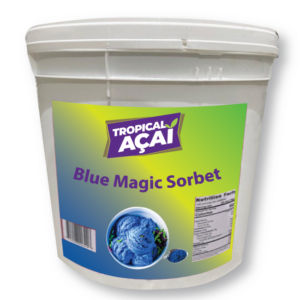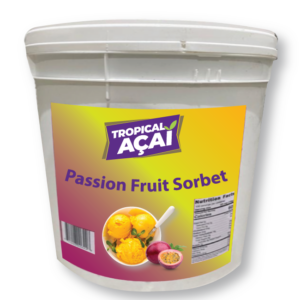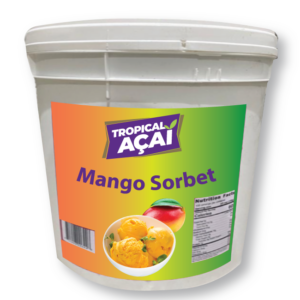Did you know that Acai, the superfood known for its numerous health benefits, has gained immense popularity in Brazil? It has become a staple in the Brazilian diet, with millions of Brazilians consuming acai bowls and other acai-based dishes daily. This superfood has deeply ingrained itself in Brazilian culture and is considered an essential part of gastronomy.
Key Takeaways:
- Acai has gained immense popularity in Brazil and is consumed by millions of Brazilians daily.
- It has become a staple in the Brazilian diet and is essential to gastronomy.
- Acai bowls and other acai-based dishes are widely enjoyed in Brazil.
- The popularity of Acai reflects its numerous health benefits and deep roots in Brazilian culture.
- Stay tuned to learn more about the origins of Acai in Brazil and its rise to international fame.
The Origins of Acai in Brazil
Acai na tigela, also known as Acai Bowl, is a traditional Brazilian dessert that originated in the Pará and Amazonas regions. Made from the frozen and mashed fruit of the acai palm, it has a delightful blend of earthy and creamy flavors.
Acai na tigela is commonly served as a smoothie in a bowl or glass, generously topped with granola, banana, and other fruits. It is a delicious treat and a visually appealing dish known for its vibrant colors and refreshing taste.
While Acai na tigela is now enjoyed throughout Brazil, it is trendy and regionally localized in certain areas. Places like Pará, Rio de Janeiro, Florianópolis, São Paulo, and the northeastern coast have embraced this delightful Brazilian dessert as a part of their local culinary traditions.
Acai's Importance in Brazilian Culture
Acai, a staple food in Brazilian cuisine, holds a significant place in Brazilian culture. Alongside beans and rice, Acai is considered one of the most beloved ingredients in Brazil.
With its unique flavor and versatility, Acai is consumed in various forms throughout the country. It is commonly enjoyed as a side dish, a dessert, or an accompaniment to savory dishes such as fish, shrimp, or meat. No traditional meal in the northern regions of Brazil is complete without a serving of Acai.
Most communities in Brazil have acai processing machines to meet the demand for acai consumption. These machines remove the pits and crush the berries, transforming them into a velvety slurry that is savored as a soup or side dish.
“Acai, alongside beans and rice, forms the heart of Brazilian cuisine. It is cherished for its unique flavor and nutritional value, making it an essential ingredient in traditional dishes and modern creations.”
Acai’s popularity and widespread use reflect its deep integration into Brazilian culture, where it is regarded as not just a food but a symbol of the country’s culinary heritage. Whether enjoyed in the form of acai bowls, smoothies, or traditional recipes, Acai continues to be a cherished ingredient that enhances the flavors and delights the taste buds of Brazilians and visitors alike.
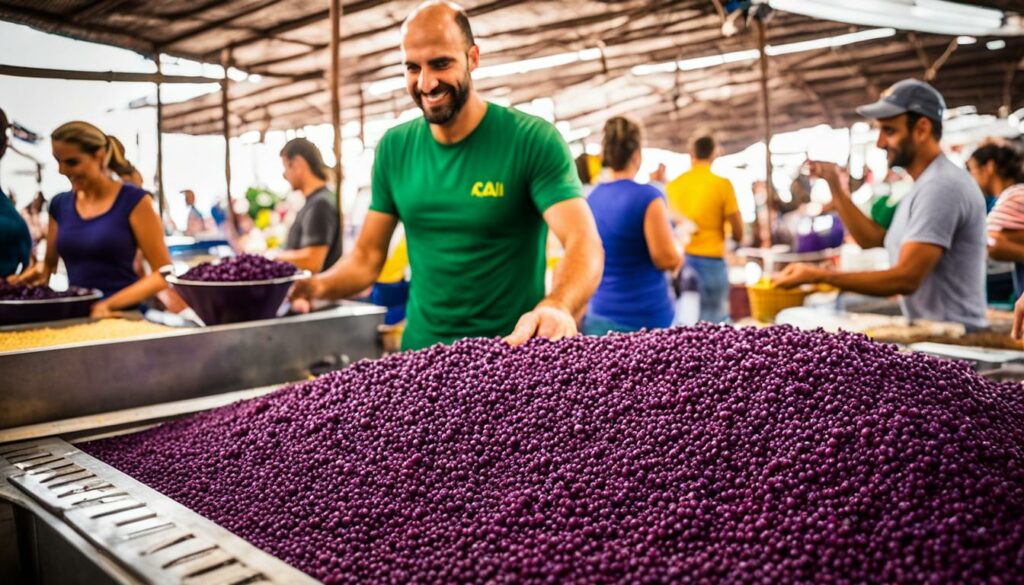
Acai's Journey from the Amazon to the World
The journey of Acai from the Amazon rainforest to the world is remarkable. The vast majority of acai production takes place in the Brazilian states of Pará, Amapá, Maranhão, and Tocantins, with Pará alone accounting for nearly 95% of the total output.
Acai production is unique because it is primarily carried out by small-scale farmers who adhere to traditional practices. These farmers play a pivotal role in harvesting the acai berries, which grow abundantly on the acai palm trees in the Amazon rainforest.
Harvesting Acai is an intricate process that involves scaling tall trees and carefully collecting the clusters of dark purple fruits. Due to its highly perishable nature, Acai needs to be processed quickly to preserve its integrity. It is commonly processed into frozen puree, juice, or powder, ensuring that it can be enjoyed in various forms without losing its nutritional value.
The commitment of small-scale farmers to harvest and process acai sustainably has allowed this superfood to travel from the remote rainforests of the Amazon to kitchens and dining tables around the globe.
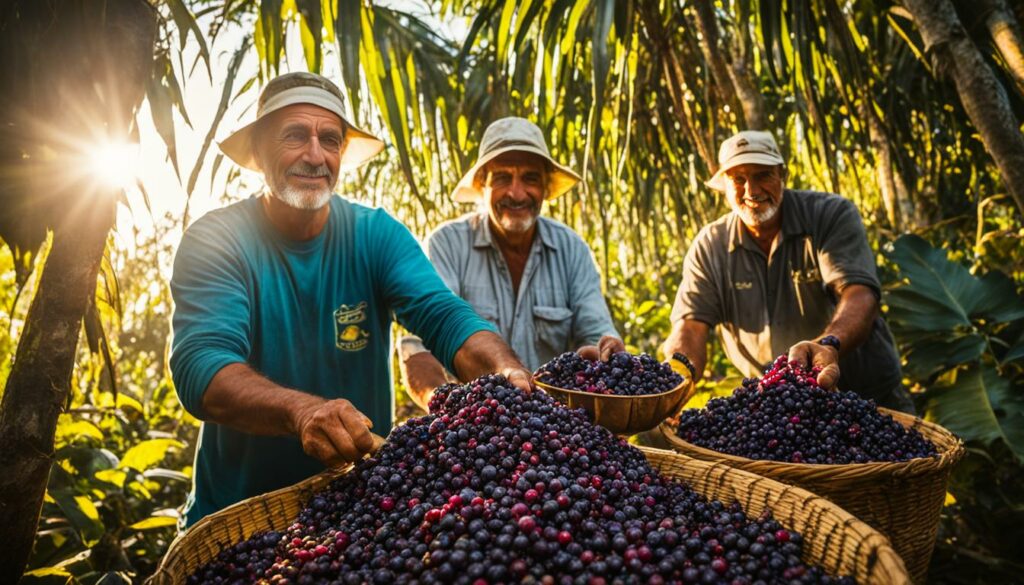
| Key Points | Details |
|---|---|
| Acai Production Location | Primarily in the Brazilian states of Pará, Amapá, Maranhão, and Tocantins |
| Small-scale Farmers | Play a significant role in harvesting and processing acai using traditional methods. |
| Acai Harvesting | It involves scaling tall trees in the Amazon rainforest and collecting clusters of dark purple fruits. |
| Acai Processing | It was quickly processed into frozen puree, juice, or powder to preserve its integrity and nutritional value. |
Acai's Rise to International Fame
Acai’s global sensation can be attributed to its remarkable health benefits, making it a popular superfood worldwide. Packed with antioxidants, fatty acids, vitamins, and minerals, Acai offers a range of advantages that promote overall well-being. Here are some key health benefits of Acai:
- Lower Cholesterol: Acai is known to improve cholesterol levels, reducing the risk of diverse diseases.
- Boost Brain Function: The antioxidants in Acai help protect brain cells from damage and improve cognitive function.
- Improve Skin Tone: Acai’s high antioxidant content promotes healthy skin by combating free radicals and reducing signs of aging.
- Protect Against Cancer and Cardiovascular Diseases: Acai’s antioxidants help prevent cell damage and inflammation, reducing the risk of cancers.
With such impressive health benefits, it’s no wonder that Acai has gained international recognition. It has become a popular ingredient in various products and dishes, and one preparation that particularly stands out is the acai bowl.
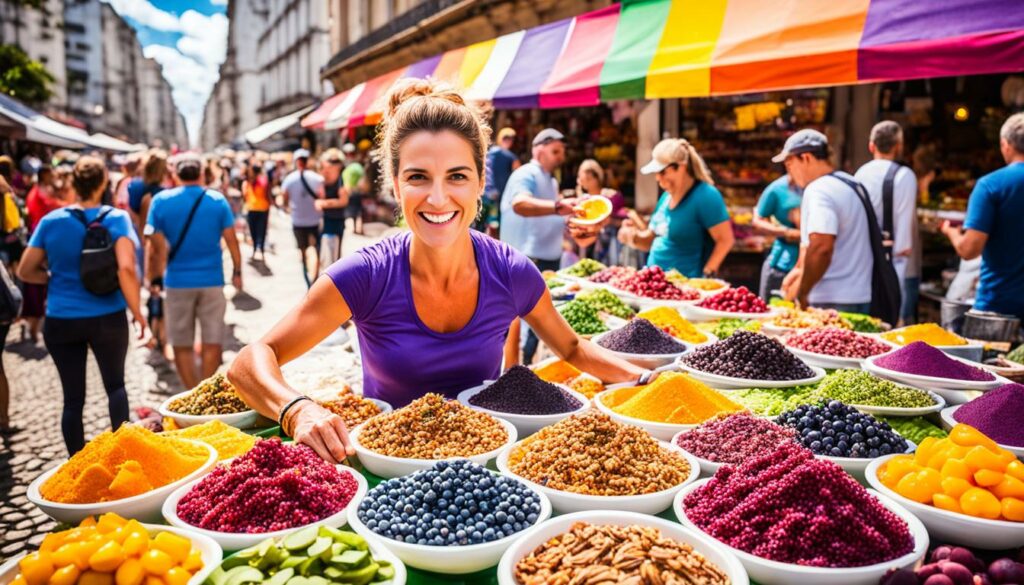
Exploring the Acai Bowl Phenomenon
The acai bowl has taken the health-conscious community by storm. These visually captivating bowls are not only delicious but also highly nutritious. Typically made with a blend of frozen acai berries, fruits, and toppings such as granola and honey, acai bowls provide a delightful and satisfying way to enjoy the goodness of Acai.
“Acai bowls have become a global sensation, loved by health-conscious individuals for their nutritious and delicious nature.”
The popularity of acai bowls can be attributed to their versatility and the ability to personalize them according to individual preferences. They are often enjoyed as a refreshing breakfast or a post-workout snack, providing sustained energy and essential nutrients.
Acai Bowl Toppings and Their Benefits
| Toppings | Benefits |
|---|---|
| Granola | Provides dietary fiber, energy, and essential minerals |
| Fresh Fruits | It delivers vitamins, antioxidants, and natural sweetness |
| Coconut Flakes | It is rich in healthy fats fiber and adds a tropical flavor |
| Nuts and Seeds | Offers protein, healthy fats, and additional crunch |
| Honey or Maple Syrup | It provides natural sweetness and potential antioxidant properties |
Incorporating acai bowls into your diet can be a delicious and convenient way to enjoy the health benefits of Acai. Whether you’re looking for a refreshing breakfast or a nutritious snack, acai bowls are a fantastic option to satisfy your cravings while nourishing your body.
Acai's Deep Connection to the Amazon
Acai’s roots are deeply intertwined with the Amazon rainforest, a vital part of Indigenous peoples’ culture for thousands of years. Acai holds immense significance for these communities as a source of nourishment, raw materials, and traditional medicine.
In Brazil’s Amazon region, Acai is typiBrazil’s Amazon region or without any additives or sweeteners. It is often consumed as a side dish, accompanying various meals, and is highly treasured for its rich nutrients and energy-providing properties.
The Amazon Indigenous peoples have long recognized Acai’s incredible benefits. Its consumption provides essential vitamins, minerals, and antioxidants that contribute to well-being. Moreover, Acai has been used as a traditional remedy for various ailments and is believed to possess healing properties.
“Acai has been our nourishment and medicine for generations. It symbolizes our deep connection to the Amazon and sustains us physically and spiritually.” – Indigenous Community Leader
This sacred fruit symbolizes the Amazon and Brazil, evoking a sense of pride and reverence for the region’s natural wonders. Consuming it allows one to not only experience the exceptional taste of Acai but also connect with the rich cultural heritage and deep roots of Indigenous communities.
Acai's Indigenous Consumption Rituals
The Indigenous peoples of the Amazon region have preserved their traditional practices of consuming Acai, honoring its importance in their culture. Here are some fascinating rituals associated with Acai:
- Acai Gatherings: Indigenous communities gather to harvest and process acai berries, emphasizing the unity and communal spirit surrounding this activity.
- Cultural Celebrations: Acai plays a central role in cultural celebrations, where it is shared and enjoyed with music, dance, and storytelling.
- Medicinal Applications: Indigenous healers use various parts of the acai palm tree, including leaves, bark, and roots, for their medicinal properties, utilizing their knowledge passed down through generations.
These practices highlight the holistic connection between the Amazon ecosystem, Indigenous peoples, and Acai, emphasizing the sustainable relationship forged over centuries.
| Critical Elements of Acai’s Deep Connection to the Amazon | Description |
|---|---|
| Indigenous Culture | Acai is deeply ingrained in the customs, rituals, and identity of Indigenous communities in the Amazon. |
| Nourishment | Acai provides essential nutrients, vitamins, and minerals that sustain the physical well-being of Indigenous peoples. |
| Traditional Medicine | Acai is used by Indigenous healers for its medicinal properties, addressing various health concerns. |
| Unity and Communal Spirit | Acai gatherings bring Indigenous communities together, fostering a sense of unity and cultural pride. |
| Sustainable Relationship | Indigenous harvesting and consuming Acai practices reflect a harmonious connection with the Amazon ecosystem. |
The deep-rooted connection between Acai and the Amazon underscores the importance of preserving this valuable fruit and the ecosystems that support its growth. Celebrating Acai means acknowledging Indigenous peoples’ knowledge, traditions, and wisdom, while also recognizing the invaluable contributions of the Amazon rainforest to our planet.
Acai's Spread Across Brazil
Acai’s popularity began to spread across Brazil in the 1970s, thanks to the migration of ribeirinhos (riverbank dwellers) from the Amazon region to other parts of the country. They brought Amazonian fruits, including Acai, which became available in different cities.
This migration of ribeirinhos not only enriched Brazil’s cultural diversity but also introduced the country to the delicious and nutritious Acai. As these riverbank dwellers settled in their new locations, they continued their traditional consumption of Acai, slowly integrating it into the local culinary scene.
However, the influence of Brazilian jiu-jitsu legends Hélio and Carlos Gracie in the late ’80s propelled Acai to new heights of popularity. These influential figures promoted Acai as a nutritious and energizing food, perfect for athletes, leading to its widespread adoption in the sports community and beyond.
Migration of Ribeirinhos: Connecting Brazil's Regions
The migration of ribeirinhos played a crucial role in the regionalization of Acai across Brazil. These riverbank dwellers, primarily from the states of Pará and Amazonas, brought the fruits of the Amazon with them as they settled in different parts of the country.
As they established themselves in their new homes, they continued their traditional practices of harvesting and consuming Acai, gradually introducing it to local markets and communities. Through their migration, Acai became accessible to people who otherwise may not have had the opportunity to try this nutritious fruit.
Today, thanks to the migration of ribeirinhos, Acai is enjoyed by millions across the country, from the bustling metropolises to the small towns and rural areas.
Brazilian Jiu Jitsu: Acai's Path to Popularity
The rise of Acai’s popularity can also be attributed to the influence of Brazilian jiu-jitsu, a martial art that originated in Brazil. The Gracie family, particularly Hélio and Carlos Gracie, were instrumental in promoting Acai among athletes and martial artists.
Recognizing the exceptional nutritional benefits of Acai, the Gracie brothers introduced it as a staple food in their training regimen. Acai provided energy and nutrients to fuel intense workouts and aided muscle recovery.
As the popularity of Brazilian jiu-jitsu spread globally, so did the recognition of Acai as a superfood. Athletes and fitness enthusiasts from all corners of the world began incorporating Acai into their diets, further bolstering its international reputation.
Brazilian Jiu Jitsu Legends: Hélio and Carlos Gracie
| Name | Contributions to Brazilian Jiu Jitsu |
|---|---|
| Hélio Gracie | Developed Brazilian jiu-jitsu techniques, adapted the art for smaller individuals, promoted Acai as a staple food for athletes |
| Carlos Gracie | One of the founders of Brazilian jiu-jitsu established the Gracie Jiu-Jitsu Academy, which popularized Acai among martial artists. |
Through their dedication to Brazilian jiu jitsu and their promotion of Acai, Hélio and Carlos Gracie left a lasting impact on the sport and its popularity. Their legacy continues to inspire athletes and nourish communities around the world.
Acai’s spread across Brazil is a testament to its versatility, nutritional value, and the influence of cultural exchanges. From the migration of ribeirinhos to the promotion by Brazilian jiu-jitsu legends, Acai has become a beloved and iconic ingredient, contributing to Brazil’s diverse and vibrant culinary landscape.
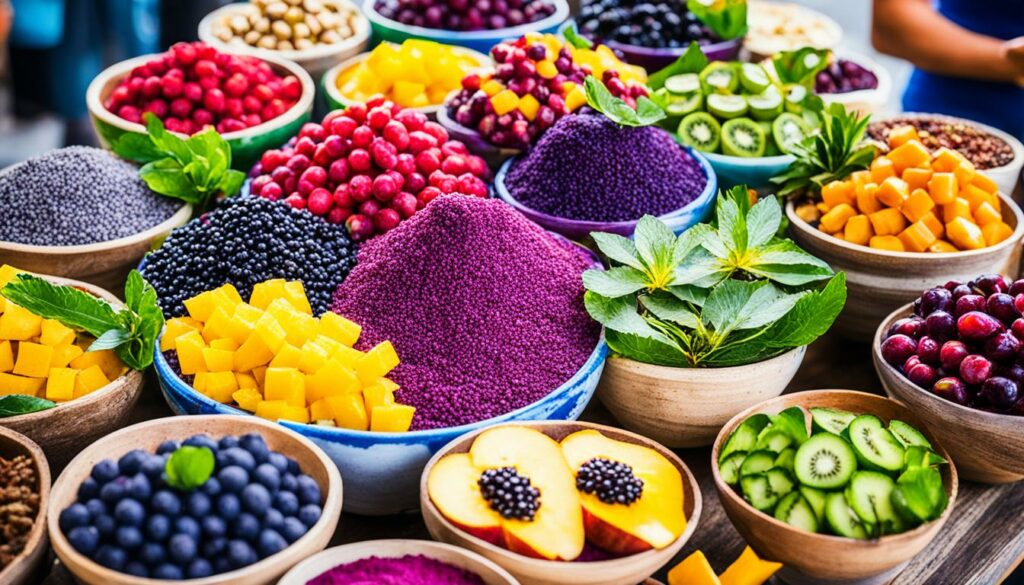
Acai's Place in Brazilian Cuihas established itself as a beloved ingredient in Brazilian cuisine, occupying a prominent position in the hearts and palates of Brazilians. It has become a pillar of the country's culinary heritage, often mentioned in the same breath as staple foods like beans and rice.
Renowned for its unique taste and nutritional benefits, Acai has created a phenomenon of addiction among the Brazilian population. People crave the earthy and fruity flavor of Acai and the energy it provides. It has become an integral part of their daily diet, deeply ingrained in their food culture.
Acai’s presence in Brazilian cuisine is celebrated and cherished, whether it’s embraced in traditional dishes or modern creations like acai bowls. It adds a delightful depth of flavor and texture to various recipes, enhancing the overall gastronomic experience.
Here is a table showcasing the significance of Acai alongside other beloved Brazilian ingredients:
| Beloved Brazilian Ingredient | Description |
|---|---|
| Acai | It is an addictive and energy-boosting berry renowned for its unique taste and nutritional benefits. |
| Beans | A staple source of protein and a fundamental component of Brazilian cuisine. |
| Rice | A versatile grain that accompanies various dishes and serves as a foundation for many Brazilian meals. |
Acai, beans, and rice form a holy trinity of flavors representing Brazilian gastronomy’ssoul. These ingredients combine to create delicious and nourishing meals synonymous with Brazilian culture.
Below, you’ll find a quote from a Brazilian chef emphasizing the addictive nature of Acai:
“Acai is not just a berry; it’s an addiction. Its enticing taste and energizing properties make it a beloved ingredient in Brazilian cuisine, capturing the hearts and taste buds of Brazilians across the country.”
– Chef Eduardo Silva
As you can see, Acai’s place in Brazilian cuisine is undeniable. Its addictive flavor, nutritional benefits, and integral role in traditional recipes have firmly established it as a beloved Brazilian ingredient.
So, whether you’re savoring Acai in a classic Brazilian dish or indulging in a trendy acai bowl, you are experiencing the deep-rooted connection between Acai and Brazilian cuisine.
Conclusion
The international popularity of Acai is a testament to its cultural significance and exceptional nutritional profile. Originating in the heart of the Amazon rainforest, this superfood has captured people’s attention and taste buds worldwide. Its journey from Brazil to the rest of the world has been marked by its unique blend of flavors and health benefits.
Acai’s deep connection to Brazilian culture is evident in its widespread use in traditional dishes and its representation of Brazilian pride. Whether enjoyed as a simple side dish or transformed into trendy acai bowls, Acai is integral to Brazilian gastronomy.
The acai culture continues to thrive, both in Brazil and internationally. This small, purple fruit has become a symbol of Brazil and its rich heritage. Its international popularity is a testament to its nutritional value and ability to captivate people from all walks of life.
As a beloved ingredient in Brazil, Acai embodies a food choice and a way of life. Its unique taste and health benefits leave a lasting impression, making it a favorite among health-conscious individuals. Whether you’re savoring a bowl of Acai in Rio de Janeiro or enjoying an acai-infused smoothie bowl in Los Angeles, the cultural significance of Acai is undeniable.


